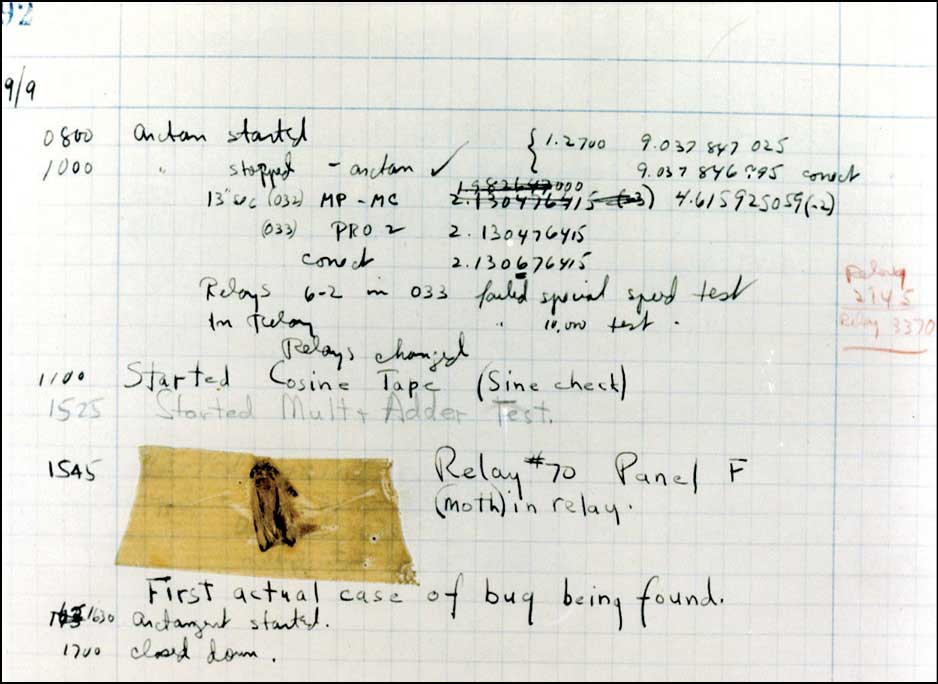Here are some interesting facts, incidents, memorable events and little-known facts from the lives of scientists…
Intel Inside
Intel was founded by Robert Noyce, along with Gordon Moore and Andrew Grove. The headquarters building is named ‘Robert Noyce Building.’
While presently almost every PC has at least one Intel chip, Noyce thought ‘it seemed ridiculous’ to build a home computer.
Noyce later recalled, “Long before Apple, one of our engineers came to me with the suggestion that Intel ought to build a computer for the home. And I asked him, ‘What the heck would anyone want a computer for in his home?’”
Black-market radio
During World War II, the radios used by the forces were heavy and erratic, and not designed for jungle warfare. Kilby wanted to improve the situation and travelled to Kolkata, India, for a truckload of black-market radio parts. Soon, he succeeded in building smaller, more reliable radios for the troops. His invention of integrated circuit stems from this attitude, “If something does not meet your requirements, rebuild.”
First actual bug
While she was working on a Mark II Computer at a US Navy research lab in Dahlgren, Virginia, in 1947, a computer problem baffled Grace Murray Hopper and her team. When they opened the machine, they found a moth inside, stuck in a relay. Removing the offending creature, she remarked that they were ‘debugging’ the system. Hopper pasted the creature into her log book and noted, “First actual case of a bug being found!”
The remains of the moth can be found in the group’s log book at the Smithsonian Institution’s National Museum of American History in Washington, DC, USA.
She is credited with the terms ‘bug’ and ‘debug’ for computer errors and how to fix them. Hopper led the team that invented COBOL (common business-oriented language), the first user-friendly business computer software program.

Silicon transistors? Impossible!
On May 10, 1954, at the Institute of Radio Engineers (IRE) National Conference on airborne electronics in Dayton, Ohio, there was a serious discussion and the speakers were of the general opinion that the silicon transistor was a long way off or probably impossible. Taking out those tiny little devices from his coat pocket, Teal announced, “Contrary to what my colleagues have told you about the bleak prospects for silicon transistors, I happen to have a few of them here in my pocket.” Gordon Teal and his team created the first commercial silicon transistor by April 14, 1954.
Flight path of bees
When Alan Turing was around the age of seven, the family went on a picnic in Ullapool, Scotland. Thrilled at the honeybees all around, Alan got a brilliant idea of getting honey for their afternoon tea. He intently watched a few bees, plotted their flight paths and calculated the position of the hive. Soon he reached the spot and presented a treat for the family.
Turing is said to have learnt reading only in three weeks, at a very early age.
Alan Turing is regarded as the father of modern computer science and the father of artificial intelligence.
Saintly scientist
In May 1901, a scientist was adding finishing touches for his lecture at the Royal Society, London. A telegram from an industrialist seeking an immediate meeting disturbed him as he had no time to meet anyone, even a multimillionaire. He declined the invitation and received a counter reply from the industrialist informing the scientist that he was coming down to London himself.
As the scientist was about to leave for the lecture, there came Major Stephen Flood Page, the managing director of the Marconi’s Wireless and Telegraph Company, carrying a handful of papers.
The scientist later recalled his conversation with Page, “He made an earnest request not to divulge all valuable research results in today’s lecture.” “There is money in it—let me take out [a] patent for you. You do not know what money you are throwing away,” said Page. Of course, “I will only take half share in the profit—I will finance it,” he said. This multimillionaire was pleading like a beggar.
The scientist refused the offer and delivered his lecture at the Royal Society.
This gentleman was Jagdish Chandra Bose!
Pinging
‘Ping’ was written by Mike Muuss in December 1983.
From his home page, “I’m the architect of BRL-CAD, a substantial third-generation CSG solid modeling system, available free of charge, which you probably have never heard of, and the author of ping, ttcp and assorted other network goodies. Ping is a little thousand-line hack that I wrote, which practically everyone seems to know about. It’s included in every copy of UNIX and Windows, putting it into nearly every computer on the planet. “
Sadly, Mike was killed in an automobile accident on November 20, 2000. His home page is still available, a testament to his intellect and indomitable spirit.
Home of World Wide Web
His parents taught him to use mathematics everywhere, even at the dining table. Out of habit, he played with imaginary numbers even while eating. As a hobby, he built a computer with TTL gates and M6800 processor and an old television while still studying at the Queen’s College at the Oxford University, England.
To solve the problem of sharing information at Large Hadron Collider at CERN, he created the World Wide Web. He did this single-handedly, unlike most other scientists. And he did not patent it. The man behind this information explosion is Tim Berners-Lee.
Eric Schmidt, CEO, Novell, commented in the New York Times, “If this were a traditional science, Berners-Lee would win a Nobel Prize. What he has done is that significant.”
Commenting on the home page in the Internet, Tim Berner said, “They may call it a home page, but it’s more like the gnome in somebody’s front yard than the home itself.”
Double Nobel
John Bardeen, Walter H. Brattain and William Shockley were awarded the Nobel Prize in Physics in 1956, for ‘investigations on semiconductors and the discovery of the transistor effect.’
The Nobel ceremony took place in Sweden on the evening of Monday, December 10. John Bardeen did not want to disturb the studies of his two sons at Harvard. So he brought his third (only other) son to the Nobel ceremony. King Gustav chided Bardeen for leaving his family behind on such an important occasion. With profound confidence, he assured the King that the next time he would bring all his children, as if he would bring them for the next-time dinner.
In 1972, Bardeen was awarded the Nobel again, along with L.N. Cooper and J.R. Schrieffer, for the successful explanation of superconductivity. And, he did bring all his children to that Nobel ceremony.
John Bardeen is the only person in history to have received two Nobel Prizes in physics.
Dr X
There was this popular TV quiz show in 1957, ‘I’ve Got a Secret,’ wherein audience were challenged to recognise a celebrity known as ‘Dr X’ with a few clues. One of the celebrity panelists, Bill Cullen, asked ‘Dr X’ if he had invented some kind of machine that might be painful when used. The mysterious doctor replied, “Yes, sometimes it’s most painful.”
Later the identity of ‘Dr X’ was revealed as Philo Farnsworth, the father of electronic television. Then the programme anchor confessed, “We’d all be out of work if it weren’t for you.”
Hearty mistake
Wilson Greatbatch was building an oscillator to record heart sounds in the late 1950s. On powering up the circuit, he observed that it was giving a steady electrical pulse of 1.8 millisecond followed by a 1-second interval. A mistake somewhere! Recalling the incident, Greatbatch said, “The oscillator required a 10,000-ohm resistor at the transistor base. I reached into my resistor box for one, but I misread the colour coding and got a 1-megaohm resistor by mistake.” He was about to desolder it, but he waited for a moment. These pulses and the device could regulate the heartbeat. After two years of refinement and re-refinement, he built the first successful implantable pacemaker.
A deeply religious man, he believed “It was no accident. The Lord was working through me.”
Until then, these devices were the size of a television and as complicated those days. A Canadian, John Hopps invented the first cardiac pacemaker.
Maser revelation
On the early morning of April 26, 1951, Charles Townes, a microwave physicist, was walking his way to a conference in Washington, DC, with an unsolved problem in his mind. For a moment, he felt like sitting on the Franklin park bench, where ideas were pouring down on him. He pulled an envelope out of his jacket—the only piece of paper available with him then—and started jotting down the calculations. The result was the MASER (microwave amplification by stimulated emission), which amplifies microwaves to produce an intense beam and the development of LASER (light amplification by stimulated emission). Writing parallels between religion and science, later on, the physicist Charles Townes wrote, “There is a tremendous emotional experience (in scientific discovery) which I think is similar to what some people would normally describe as a religious experience, a revelation.”









